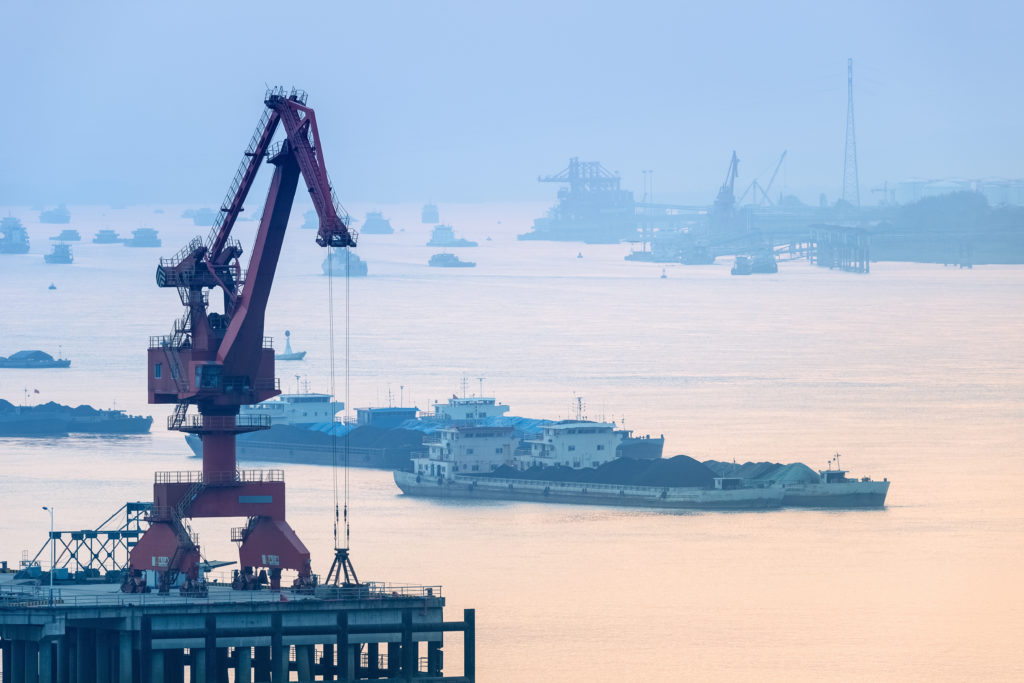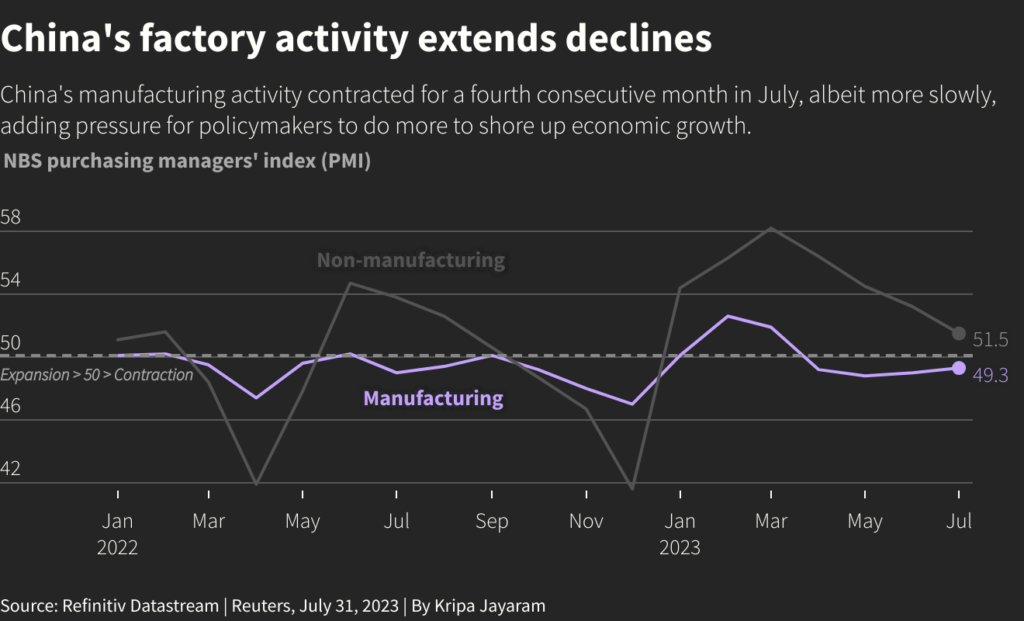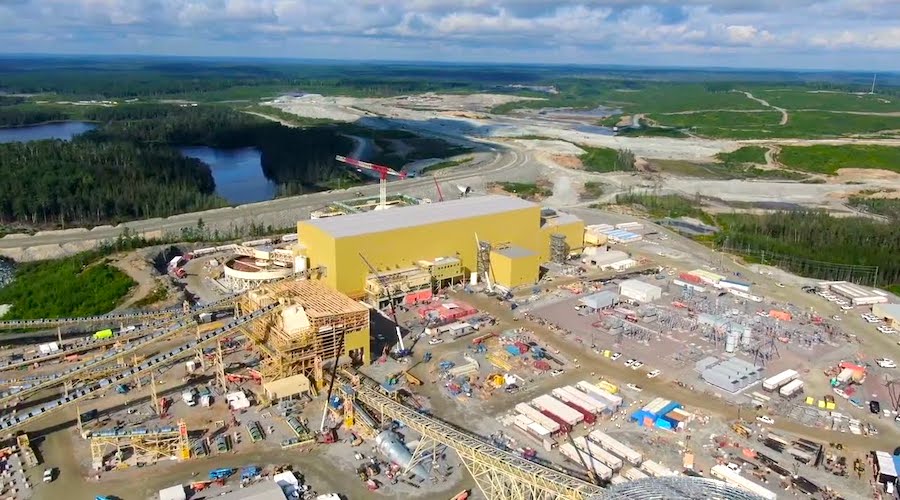Column: China’s weak PMI means good news for commodities, for now

Bad news for China’s economy appears to spell good news for commodities, with prices of copper and iron ore gaining on hopes for new stimulus measures after yet another weak indicator.
China’s manufacturing activity dropped for a fourth consecutive month in July, with the official Purchasing Managers’ Index (PMI) coming in at 49.3, below the 50 level that separates expansion from contraction.
The PMI was slightly higher from 49.0 in June, but has now been below 50 for the past three months in a worrying sign that negative sentiment is becoming entrenched in the world’s second-biggest economy.
More worrying for the economy was the sub-index for the key construction sector, which fell to 51.2 in July and is down sharply from a high of 65.6 in March.
The soft PMI data was accompanied by Beijing’s latest attempts to bolster the economy, with the state planner promising to “study and formulate policies” to restore and expand consumption in the vehicle, real estate and services sectors.
However, the pronouncements were short on detail and it remains to been seen exactly what measures will be put in place, and how effective they may be in kickstarting the flagging economy.
But for now it appears investors in copper are prepared to back Beijing, with the key Shanghai futures contract climbing to a 15-month high on Monday.
It ended at 69,460 yuan ($9,728) a metric ton, the most since April last year and up 10.6% from its low so far this year of 62,790 yuan on May 25.
It wasn’t just domestic investors being bullish on copper, with benchmark London contracts ending at $8,831.50 a metric ton on Monday, a 3-month high and up 2% from the prior close.

Iron ore also eked out a small gain, with Singapore contracts finishing at $112.46 a metric ton on Monday, up 1 cent from the previous close, but also 5.5% higher than last month’s low of $106.64, hit on July 10.
Dalian Commodity Exchange contracts ended daytime trade 0.5% higher at 841.5 yuan per metric ton, snapping two sessions of declines.
For iron ore there is more than just the hope of effective stimulus measures, with China’s imports of the key steel raw material looking strong in July.
Imports are estimated at 101.39 million metric tons by commodity analysts Kpler and at 100.96 million by Refinitiv.
If the official figure is in line with these estimates, it would be the strongest month for iron ore imports since January’s 103.6 million metric tons.
Further support for iron ore imports is likely coming from declining port inventories , with data from consultants SteelHome showing stockpiles dropped to 121.8 million metric tons in the week to July 28.
Inventories have dropped for five straight weeks and are now 10% below the 13.5 million metric tons for the same week in 2022.
The need to rebuild stockpiles and the expectations that there will be more policy support for the construction and manufacturing sectors is likely to combine to support both iron ore import volumes and prices.
The risk is that the reality of Beijing delivers doesn’t match the current optimism being baked into prices.
(The opinions expressed here are those of the author, Clyde Russell, a columnist for Reuters.)
(Editing by Miral Fahmy)
More News
{{ commodity.name }}
{{ post.title }}
{{ post.date }}

Comments